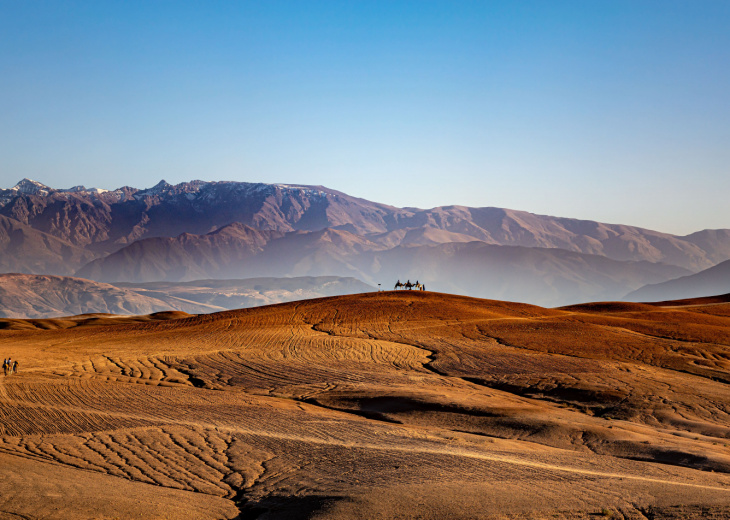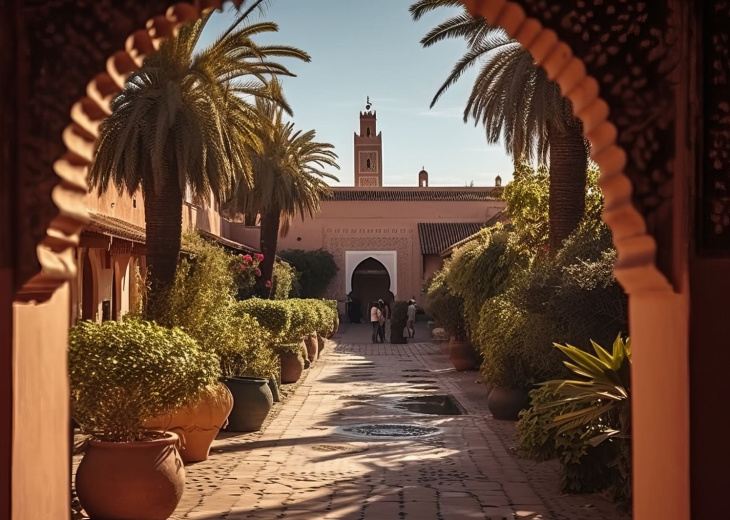

Blending Arab, Berber, Jewish and Andalusian traditions, the ancestral expertise of Moroccan artisans has been acclaimed for centuries. Whether it is a question of stone working, wood working, making things out of both ordinary and precious metals, there are genuine treasures to be found throughout the entire country! Morocco’s souks and bazaars hide very many workshops that are well worth visiting.
Gold, silver, copper, stones and gems…Rings, bracelets, earrings, necklaces and brooches…with Moroccan jewellery, the possibilities are endless! Inherited from both Berber and Jewish traditions, jewellery is everywhere in Moroccan people and culture! Most Moroccan cities have a neighbourhood devoted to jewellers, and generally this will be near the souks (Casablanca, Rabat, Marrakech, etc.). Fes and Tangier are especially well known for the goldsmiths, but you will find the best silver jewellery at Taroudant, Tiznit, Rissani and Tan-Tan.
Discover our sample itineraries that will allow you to explore Morocco on a unique trip, depending on the time you have available…




Woodworking remains one of Morocco’s most important traditions to this day. Moroccan medinas are full of wooden masterpieces of Arabo-Andalusian inspiration. Visit Morocco’s palaces and ancient estates: behind their majestic gates you will admire superb woodcrafts (ceilings and ornaments, screens and chests…). The cities of Fes, Meknes, Tetouan and Sale are home to Morocco’s most talented woodworkers. You’ll find beautiful objects made of cedar wood, lemon tree wood, thuja etc. Be seduced by their colours and fragrances. The most beautiful inlaid wood comes from Essaouira: jewellery boxes, chess sets, furniture…
Among Morocco’s most celebrates ceramics are works from Fes, for their motifs and the famous blue of Fes, but also those of Meknes and Safi. Depending on the region, ceramics take on different colours: yellow, red, beige, blue and green. In Moroccan people and culture, pottery is an ancestral know-how. Moroccan pottery of mixed Berber and Andalusian origins is principally produced in Rabat, Marrakech, Taroudant, Chefchaouen and Azemmour.
In Morocco, it is difficult to resist the charms and originality of the local leather goods: poufs, babouches (oriental slippers), luggage, belts, etc. For the most part made in Fes and Marrakech, these objects are sold in all the country’s souks at prices that simply cannot be beaten!
Before going any further, it is imperative to distinguish city carpets (usually floral patterns around a central motif) from rural Berber carpets (tied wool of bright colours and mysterious geometric motifs). The most unusual carpets are to be found in Rabat, reminiscent of the works from the high plains of Anatolia. . You’ll find the most beautiful Berber rugs in Rabat, the Rif Mountains, Marrakech and Ouarzazate.
Continue your discovery of our country and the preparation of your trip by exploring other articles in our travel guide dedicated to Morocco!


